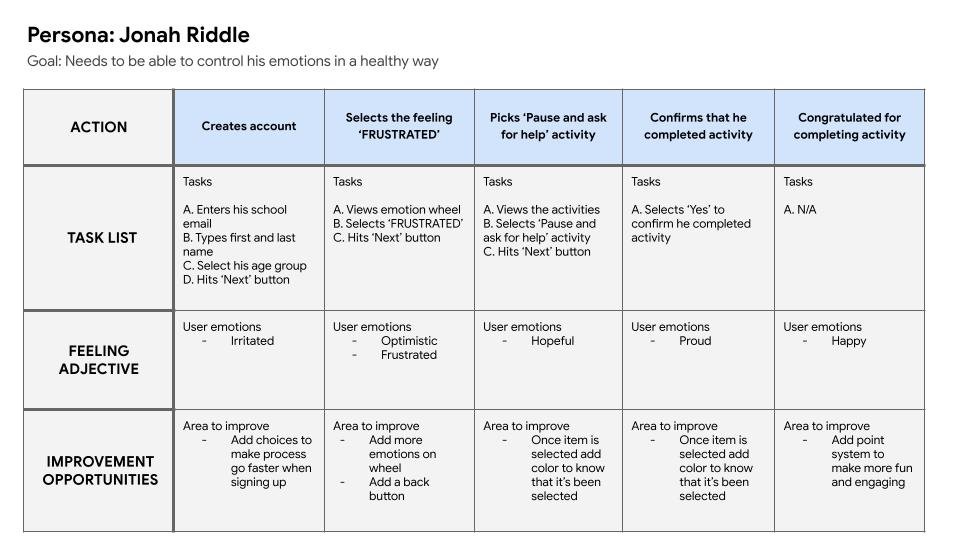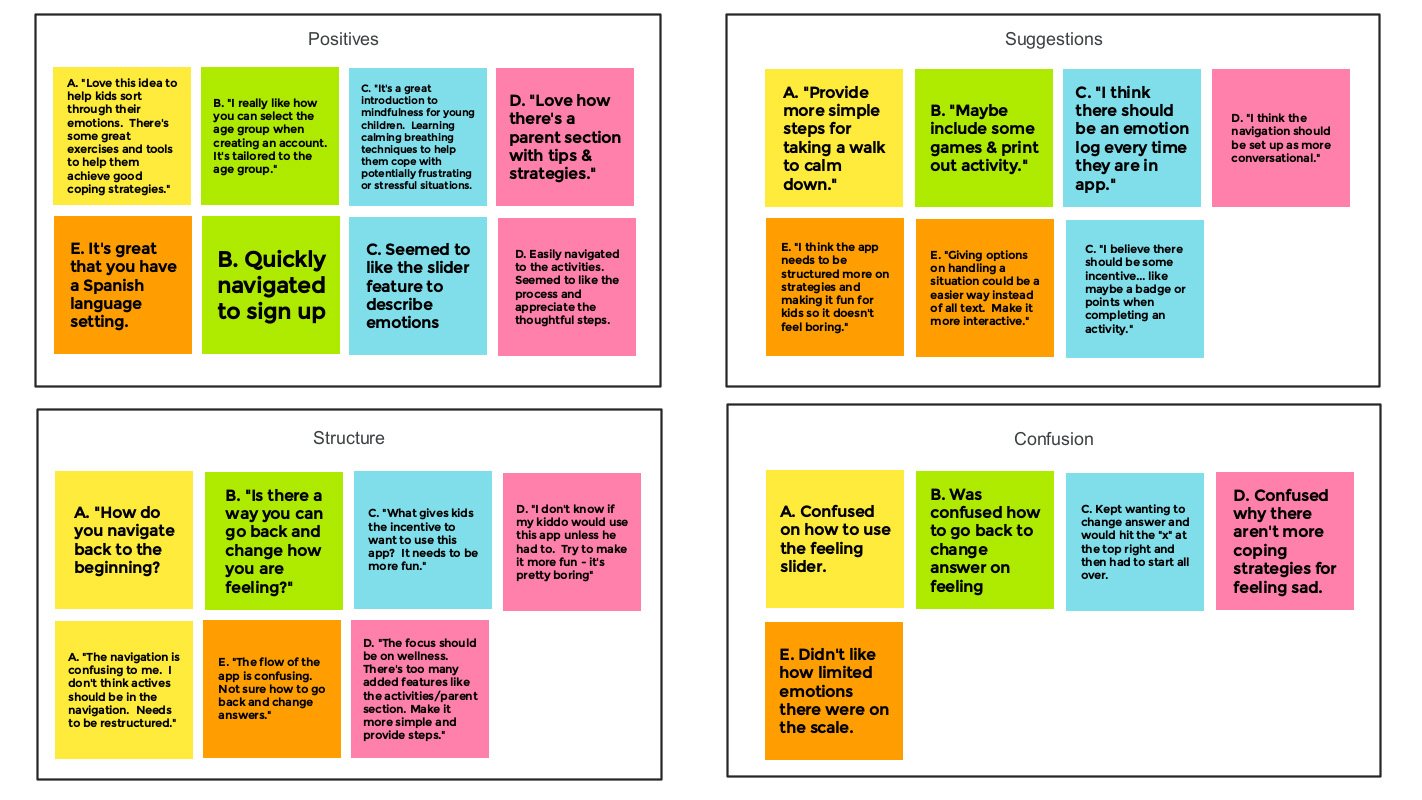
Emotischool
UI/UX


The challenge
There is a crisis going...and it’s mental health. This app is designed to help navigate difficult emotions. I discovered that children are great imitators. By teaching children mindfulness - it can be the most valuable gift at whatever life throws their way.
My role
UX designer designing from conception to delivery. Conducting interviews, paper and digital wireframing, low and high-fidelity prototyping, conducting usability studies, accounting for accessibility, and iterating on designs.
The goal
To provide coping strategies to the young generation to help support healthy minds.

User research
I conducted user interviews, which I then turned into empathy maps to better understand the target user and their needs. If the next generation can learn to be less reactive, less judgemental, and less caught up in their own heads - then we’ll all have a healthier and happier society.
Target user

User journey map
Mapping Jonah’s experience helped me gain clarity on how to help the young generation. By providing coping strategies to help develop mindfulness skills in children.


Paper sketches
I did a quick ideation exercise to come up with ideas for the layout. My focus was specifically on tracking emotions and providing tools to help cope.
Digital wireframes


Affinity diagram
Many participants thought the activities were a great way for kids to learn to cope through their emotions but suggested a point system to be included to add more incentive and engagement.
Usability study findings
These were the main findings uncovered by the usability study:


High-fidelity prototype
Based on the insights from the usability study, I focused on the user crafting activities that help kids manage their emotions in fun interactive ways.
Conclusion
I learned that even though the problem I was trying to solve was a big one, diligently going through each step of the design process and aligning with specific user needs helped me come up with solutions that were both feasible and useful.